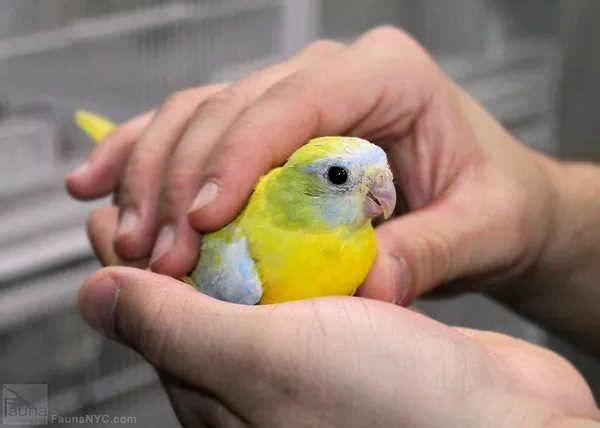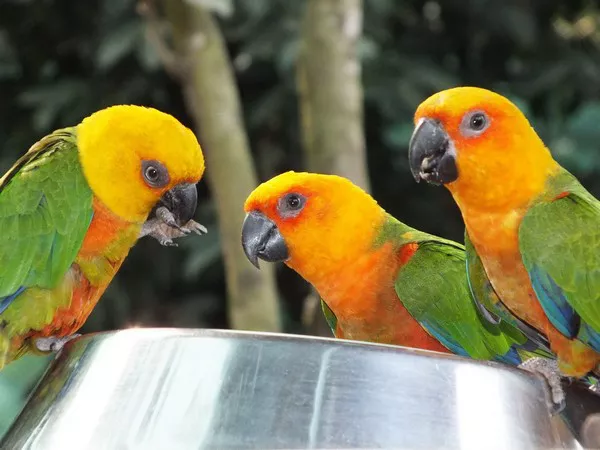African Gray Parrots, renowned for their exceptional intelligence and captivating personalities, are a popular choice among bird enthusiasts and pet owners. These highly social and communicative birds have their unique preferences when it comes to interaction and physical contact. One common question that arises among African Gray Parrot caregivers is whether these birds enjoy being petted. In this article, we will explore the fascinating world of African Gray Parrots and shed light on their responses to physical affection.
Understanding African Gray Parrots
Before delving into the topic of petting, let’s familiarize ourselves with these remarkable birds:
Species Varieties:
African Gray Parrots are divided into two main species: the Congo African Gray (Psittacus erithacus erithacus) and the Timneh African Gray (Psittacus erithacus timneh). Both species share many characteristics but differ slightly in size, coloration, and distribution.
Appearance:
African Gray Parrots are predominantly gray in color, with a striking red tail. They have white facial feathers and a distinctive bare patch of skin around their eyes, which can change color depending on their mood.
Intelligence:
African Gray Parrots are renowned for their exceptional cognitive abilities. They are considered one of the most intelligent bird species, capable of complex problem-solving, mimicry, and even understanding and using human language.
Do African Gray Parrots Like to Be Petted?
The response to petting and physical contact can vary among individual African Gray Parrots. While some may enjoy and tolerate petting, others may not be as receptive. Here are key factors to consider:
Socialization:
The level of socialization and individual personality of the parrot can influence their response to petting. Parrots that have been raised with positive human interactions from a young age may be more receptive to physical contact.
Trust and Bonding:
Building trust and a strong bond with your African Gray Parrot is essential. Parrots that feel safe and secure with their human caregivers are more likely to enjoy petting and physical interaction.
Body Language:
Pay close attention to your parrot’s body language. Signs of enjoyment can include relaxed body posture, feather fluffing, and vocalizations like purring or soft chirping. Conversely, signs of discomfort may include flinching, vocal protests, or attempts to move away.
Preferred Areas:
Some African Gray Parrots have specific areas they enjoy being touched, such as the head, neck, or back. It’s essential to discover your parrot’s preferred spots through gentle exploration.
Respect Boundaries:
Always respect your parrot’s boundaries. If your parrot shows signs of discomfort or disinterest, do not force physical contact. Pushing boundaries can erode trust and lead to negative associations with petting.
Individual Variability:
Keep in mind that each African Gray Parrot is unique, and preferences can vary widely. What one parrot enjoys, another may not, so it’s crucial to be attuned to your bird’s specific preferences and comfort levels.
Tips for Positive Interaction
To create a positive and enjoyable interaction with your African Gray Parrot, consider the following tips:
Start Slowly:
Begin with short and gentle interactions. Offer your hand for your parrot to inspect or step onto before attempting petting.
Watch for Cues:
Pay attention to your parrot’s body language and vocalizations. These cues will help you understand their comfort level and whether they are enjoying the interaction.
Positive Reinforcement:
Use positive reinforcement, such as treats or verbal praise, to reward your parrot for allowing petting. This can create positive associations with physical contact.
Consistency:
Be consistent in your interactions. Regular, brief petting sessions can help build trust and comfort over time.
Respect Personal Space:
Always respect your parrot’s need for personal space. If they show signs of discomfort or withdraw, give them room to breathe.
Conclusion
African Gray Parrots are known for their complex personalities and high levels of intelligence. Whether or not they enjoy being petted depends on the individual parrot, their socialization, and the level of trust and bonding with their caregivers. The key to successful petting and physical interaction with African Gray Parrots is to be attentive to their cues, respect their boundaries, and foster a trusting and positive relationship. By doing so, you can create a rewarding and enjoyable experience for both you and your feathered companion.
Related Topics:
























